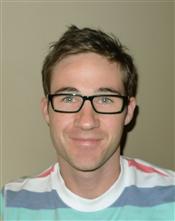Program Information
Electromagnetic Beacon Insertion in Lung Cancer Patients and Resultant Surrogacy Errors for Dynamic MLC Tumour Tracking
N Hardcastle1*, J Booth2 , V Caillet3 , R O'Brien4 , C Haddad5 , C Crasta6 , K Szymura7 , P Keall8 , (1) Royal North Shore Hospital, St. Leonards, NSW, Australia(2) Royal North Shore Hospital, St. Leonards, NSW, Australia(3)Royal North Shore Hospital, St. Leonards, NSW, Australia(4) University of Sydney, Sydney, NSW, Australia(5) Royal North Shore Hospital, St. Leonards, NSW, Australia(6) Royal North Shore Hospital, St. Leonards, NSW, Australia(7) Royal North Shore Hospital, Sydney, NSW (8) University of Sydney, Sydney, NSW, Australia
Presentations
MO-FG-BRA-6 (Monday, August 1, 2016) 4:30 PM - 6:00 PM Room: Ballroom A
Purpose: To assess endo-bronchial electromagnetic beacon insertion and to quantify the geometric accuracy of using beacons as a surrogate for tumour motion in real-time multileaf collimator (MLC) tracking of lung tumours.
Methods: The LIGHT SABR trial is a world-first clinical trial in which the MLC leaves move with lung tumours in real time on a standard linear accelerator. Tracking is performed based on implanted electromagnetic beacons (CalypsoTM, Varian Medical Systems, USA) as a surrogate for tumour motion. Five patients have been treated and have each had three beacons implanted endo-bronchially under fluoroscopic guidance. The centre of mass (C.O.M) has been used to adapt the MLC in real-time. The geometric error in using the beacon C.O.M as a surrogate for tumour motion was measured by measuring the tumour and beacon C.O.M in all phases of the respiratory cycle of a 4DCT. The surrogacy error was defined as the difference in beacon and tumour C.O.M relative to the reference phase (maximum exhale).
Results: All five patients have had three beacons successfully implanted with no migration between simulation and end of treatment. Beacon placement relative to tumour C.O.M varied from 14 to 74 mm and in one patient spanned two lobes. Surrogacy error was measured in each patient on the simulation 4DCT and ranged from 0 to 3 mm. Surrogacy error as measured on 4DCT was subject to artefacts in mid-ventilation phases. Surrogacy error was a function of breathing phase and was typically larger at maximum inhale.
Conclusion: Beacon placement and thus surrogacy error is a major component of geometric uncertainty in MLC tracking of lung tumours. Surrogacy error must be measured on each patient and incorporated into margin calculation. Reduction of surrogacy error is limited by airway anatomy, however should be taken into consideration when performing beacon insertion and planning.
Funding Support, Disclosures, and Conflict of Interest: This research is funded by Varian Medical Systems via a collaborative research agreement.
Contact Email:

